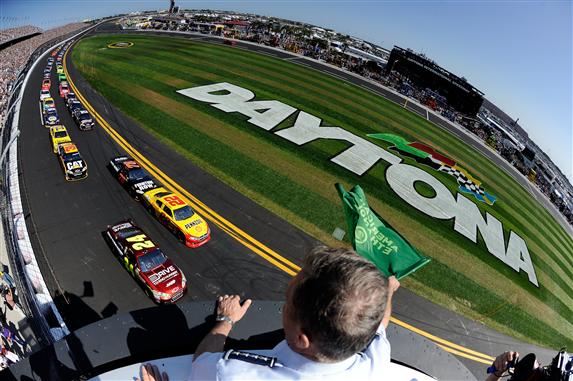As the clocks changed this weekend, I was reflecting back on some of the changes that have occurred already in this 2011 NASCAR Sprint Cup season.
It all began at Daytona, as it was a changed race track thanks to a brand new race surface. Not to mention afterward, it was the underdog story not just of the season, but of the decade. Trevor Bayne, a 20-year-old driver in just his second-ever start in Cup competition, out muscles the biggest names in the sport to win the Daytona 500.
The next week, Bayne’s childhood hero, Jeff Gordon, takes his 66-race winless streak and puts an end to it with a victory at Phoenix, and a dominating victory at that.
Finally, you have Carl Edwards using some strategy to outwit and out-muscle Tony Stewart to win at Las Vegas.
The start of the season has been incredible on the track, and that is thanks in big part to some of the changes and trends that have been seen already in the season.
Before the season started, NASCAR announced changes to the points system, making it simpler to understand for the average fan, but also making it difficult for teams should they have a bad weekend.
For decades, the winner of the race would receive 180 points, with second place getting 170 and the increments decreasing by five points through sixth. Positions seven through 11 would be separated by four points, and finally positions 12 and back would decrease by three points. It would be five bonus points each for leading a lap, leading the most laps and winning the race. The maximum number of points that could be earned in one race was 195.
This system was complicated to follow, so sweeping changes were made across the board for 2011. Now, the points are as follows: the race winner will receive 43 points (which is the full field of cars in Sprint Cup competition), with each position afterward receiving one less point. Second getting 42, third getting 41, all the way to the 43rd-place finisher, receiving one point. One bonus point each for leading a lap and leading the most laps. A victory now accounts for just three points, meaning the maximum amount one can earn in a weekend is 48.
What does this mean? It means that a bad weekend at the track will take much longer to make up. In one race, a team can go from celebrating in victory lane to finishing last, and a huge loss in points. This can be seen already as multiple teams who ran great at either Daytona or Phoenix had a bad run at Las Vegas, and put them in a hole in the points.
How do I feel about these changes…I LOVE IT. The changes mean the teams have to go for broke every weekend. There is no quotes now of, “We had a good points day” or “Points wise, it was a great run.”
No way, now one bad weekend will take several weeks to make up. And those drivers that need to make up ground will do whatever it takes to make it happen.
The changes have also done the sport some good at the track and in the ratings. For the first three weekends of racing, it was a sold out crowd. Think about that, in this economy with the price of hotels, flights, food and gas; thousands of fans still made the trip to the track to see the best drivers compete.
Those fans that couldn’t afford to make the trip or buy the tickets, they sat at home to watch the race on television, and the ratings have proved it. Daytona, Phoenix and Las Vegas saw double-digit increases in ratings from last year, a sign that fans are starting to regain confidence in a sport that many saw on a downward turn. It’s also a sign that the changes on the track have been for the positive, as NASCAR is attempting to get back to it’s roots and let the sport be more about the drivers than the officials making the decisions.
It started last year with the standard start times, meaning it was easier to tune into the race on the weekends. Then came the “boys have at it” mentality, letting the drivers be more themselves and let them control situations that happen on the race track.
This year, with the new nose on the car, a more stream-lined splitter nose rather than the bracing that’s been seen the last three years, gives the car a better look. It now looks more like the cars driven on the street, and with the spoiler on the back deck lid rather than the wing, it’s seeming that NASCAR wants to have the bigger and safer car to look more like a “stock car,” which was a big complaint from many fans.
All these changes have been for one reason, to satisfy the fans. NASCAR fans have been very vocal about what they have wanted, and already in just three races, it seems they have been very happy.
Now, NASCAR heads to one of the most popular stops on the circuit, the “bull ring” at Bristol Motor Speedway. A half-mile in length, 30 degrees of banking in the corners, and drivers with tempers just as short as the lap times, means that 170,000 people will pack NASCAR’s version of the Roman Coliseum.
The green flag flies at 1 p.m. next Sunday on FOX in the Jeff Byrd 500 Presented By Food City.
